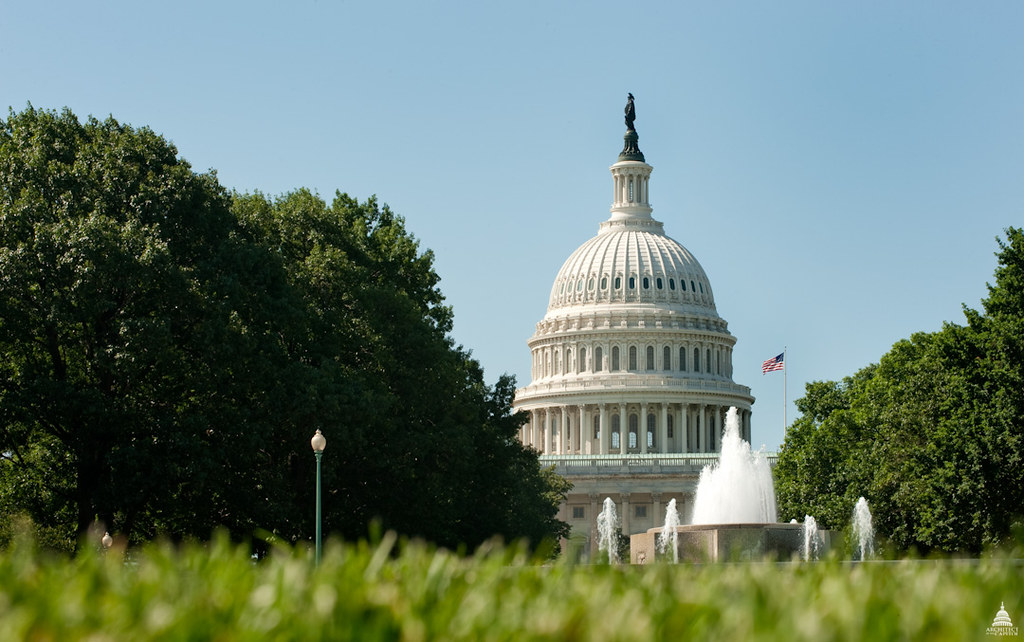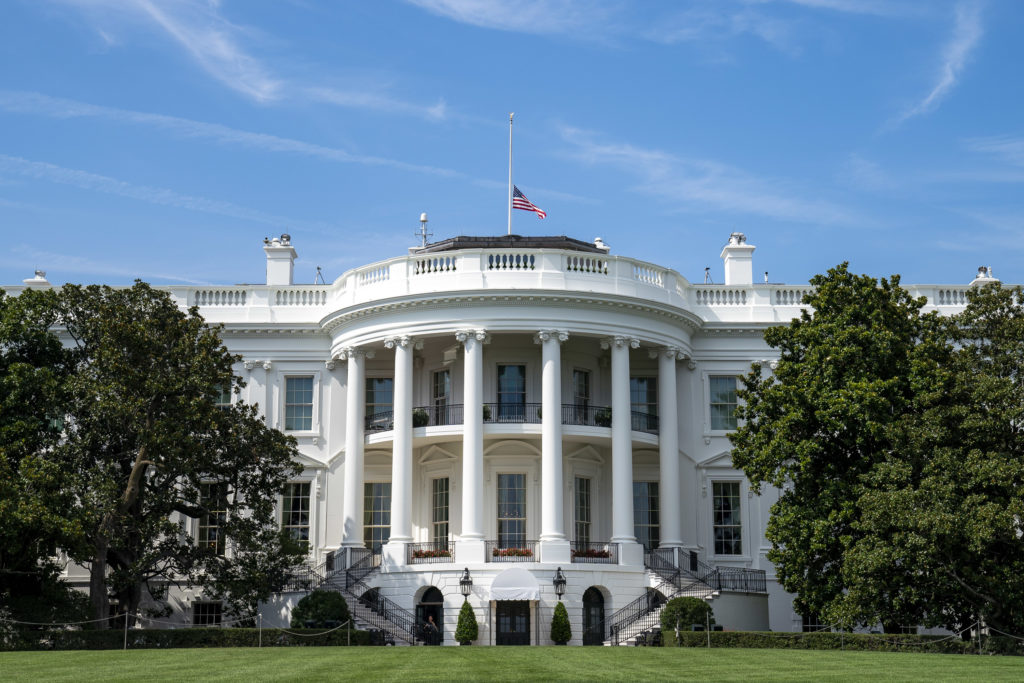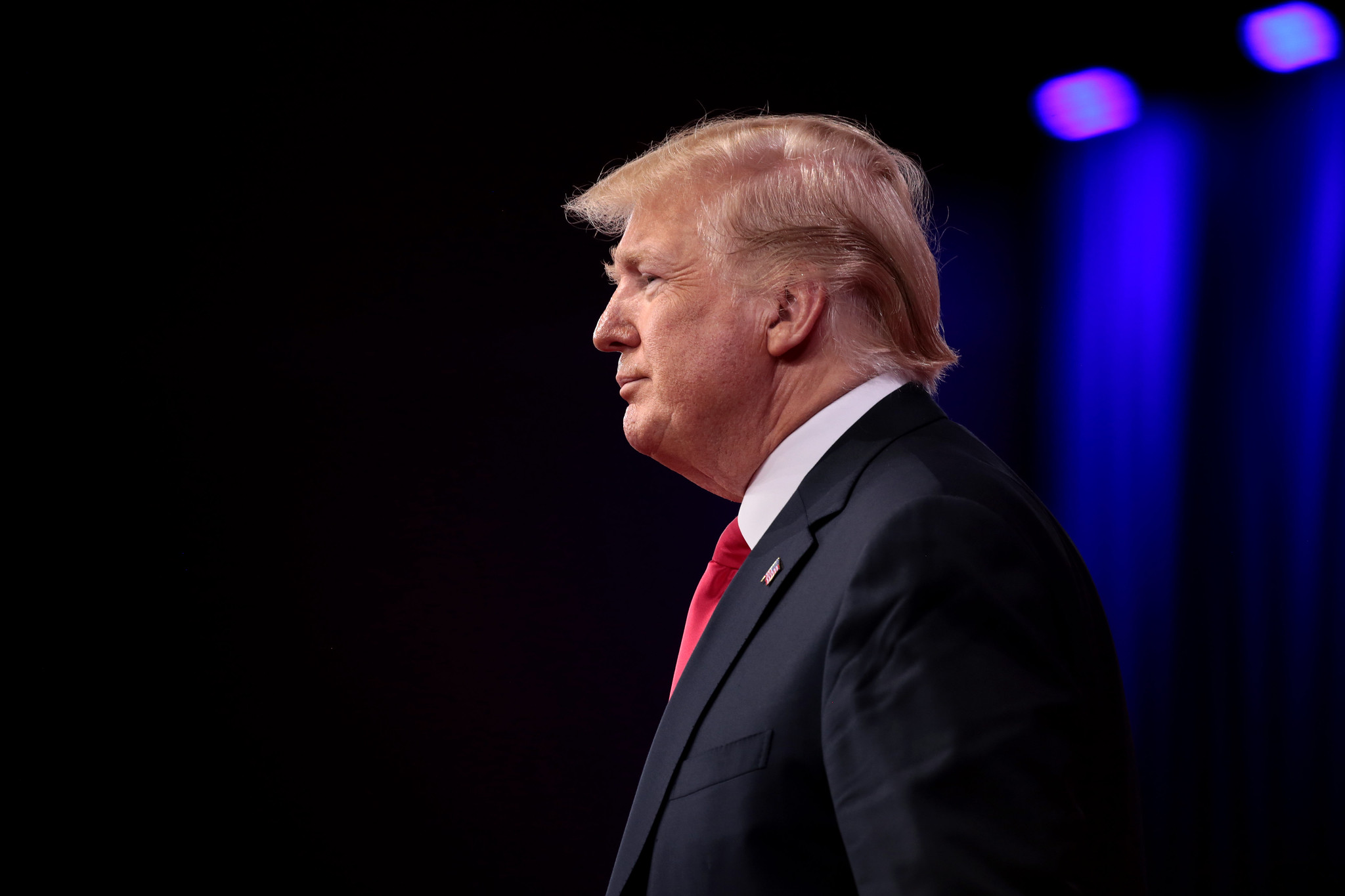The House Prepares to Move Forward With Remote Voting
On Friday, May 15, lawmakers will vote on what could be an important step toward maintaining an operational Congress during the coronavirus crisis.

Published by The Lawfare Institute
in Cooperation With

On May 13, House Rules Committee Chairman Jim McGovern unveiled H. Res. 965, his latest proposal for implementing some form of remote voting in the House of Representatives in response to the coronavirus pandemic. The committee marked up the resolution today, May 14, and the House of Representatives as a whole is expected to vote on the measure tomorrow alongside the most recent proposal for coronavirus relief. If the resolution succeeds—and partisan politics don’t get in the way—the House will finally be able to operate while respecting the social distancing measures that are almost universally recommended by public health professionals.
McGovern’s latest proposal is similar to the proposed rules change he released late in April, which was briefly scheduled for a vote before Republicans convinced House Speaker Nancy Pelosi to postpone. She and Minority Leader Kevin McCarthy instead agreed to set up an informal task force to try to reach bipartisan agreement on a way forward. That effort, however, appears to have failed. House Democratic leaders now seem determined to move forward with the new McGovern proposal, with Majority Leader Steny Hoyer himself taking the floor to defend the proposal during the recent markup. The leaders of the Republican minority, meanwhile, are calling upon their members to oppose the resolution, on the grounds that “Democrats are jamming through a rules change that would upend 200 years of precedent and have serious constitutional and institutional repercussions.”
So how would this plan work? Like its predecessor, H. Res. 965 is still centered on the idea of proxy voting, a practice in which one member of Congress casts a vote on behalf of another. Yet it incorporates changes that address various concerns with and criticisms of that approach—including some we previously put forward.
The revised proposal would provide for special procedures during certain “covered periods[,]” as designated by the speaker in consultation with the minority leader (or their designees). The speaker would be able to make such a designation only after being notified by the sergeant-at-arms, in consultation with the attending physician, that “a public health emergency due to a novel coronavirus is in effect[.]” Any designated “covered period” would last only for 45 days, though the speaker would be free to extend it in intervals of up to an additional 45 days through these same basic procedures. If the sergeant-at-arms and attending physician were ever to notify the speaker that the public health emergency is no longer in effect, the speaker would be obligated to terminate the covered period.
During such a period, any member of the House would be able to designate another member of the House as his or her proxy through a signed letter delivered to the clerk of the House, including through electronic means. No one member would be able to serve as proxy for more than 10 other members, and any member would be able to change this designation through the same procedures. The clerk would also be responsible for informing majority and minority leaders of any such designations or changes and for maintaining a list of designated proxies, which would be made available to the public. A designated proxy would, in turn, only be allowed to cast a vote on a matter or record his or her presence pursuant to “exact instruction[s]” from the member whom the proxy is representing, which the proxy would be obligated to announce prior to doing so. Any individuals voting through a proxy would be counted toward the quorum required for the House to conduct business under relevant congressional rules (and the Constitution’s Quorum Clause).
Separately, during a covered period, House committees and subcommittees would also be authorized to pursue a broad range of their functions remotely—including participating in proceedings, holding hearings and business meetings (which would have to be made open to the public), authoring reports, issuing subpoenas, and voting. The only exception would be for closed and executive sessions, which would still only be able to be held in person.
McGovern’s resolution goes to some pains to identify how remote proceedings would work under the House rules. In case further clarifications or additions are needed, it also authorizes the chair of the Rules Committee to publish regulations governing remote committee proceedings in the Congressional Record. House committees would then be obligated to abide by those regulations.
Under the proposal, committees would also have to overcome an additional hurdle before conducting a business meeting (also called a markup) remotely. A majority of the members of the committee would have to submit a letter to the speaker indicating that the “requirements for conducting a meeting in the regulations ... have been met and that the committee is prepared to conduct a remote meeting and permit remote participation.” This differential treatment of business meetings makes sense, because during markups members vote on amendments and legislative items. Hearings, by contrast, are simpler affairs with no votes.
These modified procedures do a better job of meeting the challenge of the coronavirus than McGovern’s earlier proposal did. The initial proposal would have limited the types of measures that can be pursued through modified procedures. By setting aside those limits, the updated proposal would now allow the House to continue to pursue its full range of activities—including adopting rules to further amend House procedures, if necessary—during what now promises to be an extended pandemic.
The effects of the new proposal would not be limited to covered periods triggered by the coronavirus, but would apply to any future novel coronaviruses that might evolve from the current one or might emerge separately—though one may reasonably ask why these procedures do not extend to public health emergencies brought by any contagious disease that makes meeting in person unsafe. And the use of limited publicly disclosed proxy designations combined with transparent express instructions ultimately seems like a reasonable mechanism for allowing the House to work at a distance: It balances the need for social distancing with the desire to keep members directly participating, and it provides mechanisms that can be used to audit votes and address manipulation.
A possible criticism of the new proposal is that it does not directly address concerns over the cybersecurity risks generated by remote voting, as it effectively leaves it up to individual members to ensure that their proxy designations and express instructions are communicated securely and reliably. But the proposal does allow for the chair of the House Rules Committee to publish regulations regarding proxy voting in the Congressional Record—which could be used to address these issues in the future. Members would be required to abide by these regulations only “[t]o the greatest extent practicable[,]” a more limited obligation than that applied to the regulations governing committee work. But this most likely reflects the fact that—unlike in the Senate—individual House members are largely responsible for setting up their own offices and operations, including their own information technology systems. As a result, it’s not clear whether the House could set up firm requirements on proxy voting in the short term, at least without running a risk of disabling certain members’ ability to vote.
Proxy voting is still, in many ways, a suboptimal approach to true remote voting. The latter would allow absent members to directly engage in proceedings and cast their votes, which would better approximate in-person House proceedings while eliminating any concerns about proxies.
Fortunately, Hoyer signaled on May 13 that “[p]roxy voting is the first step.” And while the McGovern resolution would implement proxy voting in the short term, it would also set out a clear road map for implementing true remote voting in the future, once safe technology and procedures are identified. Section 5 of the resolution directs the chair of the House Committee on Administration, currently Rep. Zoe Lofgren, to study, in coordination with the committee’s ranking minority member, the feasibility of using technology to conduct remote voting and then certify to the House that such technology exists. The chair of the Rules Committee, in coordination with the committee’s ranking minority member, is then required to assemble and publish regulations governing remote voting in the Congressional Record. Once this takes place, the resolution requires that members be allowed to cast their votes or record their presence remotely.
For many House Republicans, however, these measures are almost certain to go too far. Echoing the themes of the tiny-but-vocal groups protesting against social distancing measures that are currently assembling around the country—often with the support of President Trump—a number of House Republicans have been agitating for the House to return in-person for weeks. Now the minority leadership appears to have bought into this logic as it tries to whip its members to oppose H. Res. 965.
At the Rules Committee markup, several Republican members put forward to speak by the minority leadership implied in their testimony that remote voting was something close to cowardice while others suggested that the threat posed by the coronavirus was exaggerated. Others resurrected the argument that remote voting would be inconsistent with constitutional quorum requirements, a view that many Senate Republicans, at least, have moved away from in recent weeks. When pressed, these members argued that other House procedures that allowed the House to take action without an in-person majority, such as existing rules that allow members to adjust the quorum of the House in certain “catastrophic circumstances,” are similarly unconstitutional—even though they have been uncontroversially adopted by both Democratic and Republican congresses for many years.
Whether motivated by principle or politics, the divide between House Republicans and Democrats on proxy and remote voting has grown in recent weeks. Just days after persuading Pelosi and Hoyer to establish a bipartisan task force on remote voting, McCarthy and his fellow Republican participants in that task force released their own plan arguing that “there is intrinsic value in ... a physical meeting of people and ideas” and warning against pursuing “changes to centuries-old rule sand precedents of the House” in a way that is not “deliberate and bipartisan[.]”
The McCarthy proposal would allow only select committee work to proceed remotely, while implementing modified procedures—like limitations on the number of members who may be on the floor at any one time—and other “risk mitigation” measures to allow in-person proceedings to take place for House business. The inevitable trade-off, which McCarthy and his co-authors tacitly acknowledge, would be a House whose ability to pursue oversight and advance legislation would be severely hampered. In the Republicans’ view, this cost is outweighed by the tradition and unspoken virtues of in-person congressional meetings. Yet those in the House’s Democratic majority are likely to make a different calculation.
This may well explain the logic behind what has already emerged as a major Republican criticism of the revised McGovern proposal: that the procedures it provides can be implemented by the majority alone, albeit with the cooperation of the sergeant-at-arms and the attending physician. The majority is only required to consult with the minority, not seek its approval. This might seem unduly partisan, especially for the current moment of national crisis. Yet it’s not unprecedented, as existing House rules allow the use of the same basic approval structure to trigger special quorum rules in “catastrophic circumstances”—such as during times of war or terrorist attack. Moreover, it’s increasingly doubtful whether the minority leadership would approve a shift to remote voting in even the most dire of circumstances. This intransigence in turn appears to have finally convinced House Democrats to move forward with making new rules for such contingencies on their own, despite the possible political cost.
The May 15 vote may well finally allow the House to move forward with a form of remote voting. But it is unlikely to be the end of the surrounding controversy. Some House Republicans may yet decide to protest the perceived partisanship of remote voting procedures by refusing to participate or attempting to obstruct proceedings. And private plaintiffs are almost certain to challenge the constitutionality of the new procedures in federal court.
Yet it’s not clear the House leadership had much of a choice. Presented with the options of either forcing its members to put the public’s health at risk or accepting a disabled House so long as the pandemic endures, the House majority appears set to opt for a third way. This brings with it both legal and political risks, a fact that recent debates have made clear. Yet the House appears to have finally decided that those risks are worth it.






